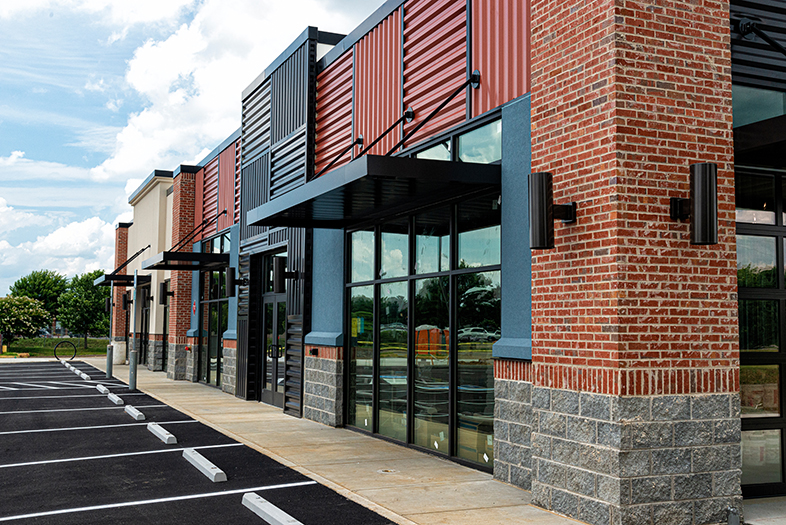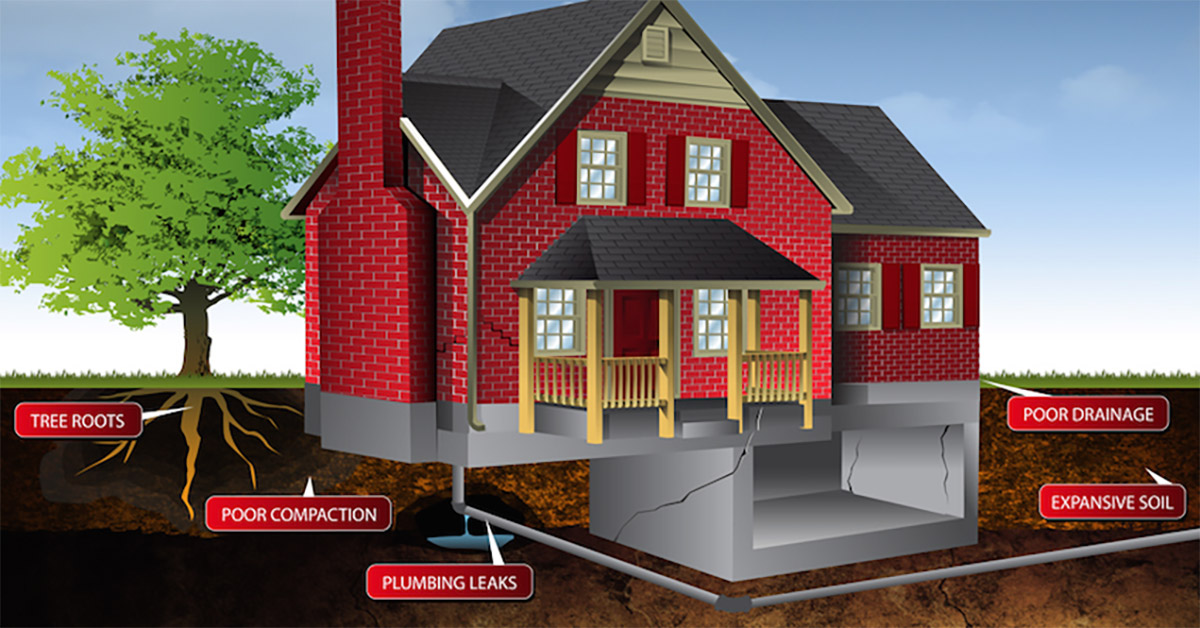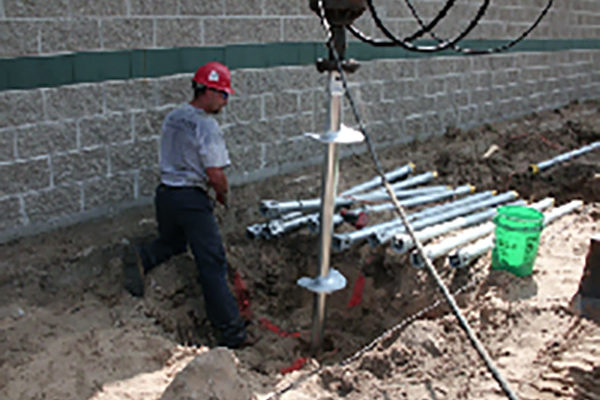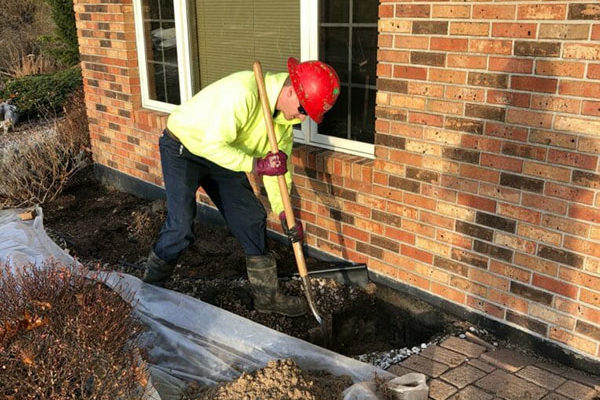Commercial properties are typically heavier and larger than homes, which can make them more susceptible to foundation problems. Additionally, commercial buildings tend to have more building codes, which can make foundation repairs more complicated compared to a residential property. These reasons, along with the financial risk, are why you need commercial foundation repair experts with experience, such as Kent Foundation Repair.

Signs a Commercial Foundation Needs Repair
A commercial building, whether it’s an office, warehouse, hotel, restaurant, store, or other type of space, shows signs of foundation problems just like a house does. Also like a house, foundation problems on a commercial property should be evaluated and addressed as soon as possible.
Without a solid foundation, the structure of your building will begin to deteriorate. The longer the deterioration is allowed to progress, the more problems can arise, and the more expensive it may become to fix everything. Keep repair costs in check by requesting a free foundation evaluation and quote as soon as you notice any of these signs:
- Cracks in the visible parts of the foundation
- Cracks on exterior or interior walls
- Sagging, slanted, or cracked floors
- Gaps or separation around windows and doors
- Windows and doors that have started sticking or have become difficult to open or close
- Bowing or cracking basement walls (if the building has a basement)
Types of Commercial Foundations We Repair
Most commercial foundations can be categorized as either deep or shallow. Within each category, there are multiple types. No matter the type of foundation, we have the solution, experience, and expertise to repair it.
Shallow Foundations
- Cantilever Wall
- Combined Footing
- Mat (or Raft) Foundation
- Spread Footing
- Strip Footing
- Wall Footing
Deep Foundations
- Battered Piles
- Bearing Piles
- Caissons
- Friction Piles
- Helical Piles
What Causes Commercial Foundation Problems?
Soil and water are the leading cause behind many commercial foundation problems, as outlined below.

If the commercial lot hasn’t been properly graded, water won’t be drawn away from the foundation as it should be. Instead, it’ll pool under and around the foundation, which can cause soil movement. Wet soil also expands, pushing up as it does so, exerting additional pressure on the foundation. Freezing can increase the expansion and pressure. When the soil dries or thaws, it contracts, and the foundation drops down as it does so. Due to the poor drainage, this doesn’t happen evenly across the foundation, which is what can cause problems. Landscaping added after the fact can also impact grading and drainage, contributing to the aforementioned problems.
Certain soils, like clay, are categorized as expansive soils. As the name implies, these soils greatly expand when they get wet, and drastically contract (shrink) when they dry out. This constant expanding and contracting causes a commercial foundation to settle and shift at an uneven rate, compromising the stability. Expansive soils, including clay, are common in areas of Michigan and Ohio, as are the related foundation problems.
Just like improper drainage, a concentration of water can cause serious damage to a commercial foundation. Whether it’s a sewer or plumbing leak, heavy rain, or flooding, the wet soil will expand, pushing up and putting pressure on a commercial foundation. Concrete is also porous, so water can seep in and erode a foundation.
Another landscaping-related issue. Trees absorb a lot of water. A tree as small as 12 inches in diameter and 30 inches high can take up 150 gallons of water a day in summer from the soil. If a tree is on one side of a commercial building, that side will be drier, causing the soil to shrink, and the weight of the slab to cause it to drop. With the other side wetter, the soil is expanded, so it has more upward pressure. This uneven distribution of pressure leads to foundation problems.
Commercial Foundation Repair Method
Kent Foundation Repair uses steel foundation piers to level commercial foundations. Steel foundation piers are the most effective and longest lasting method for stabilizing a foundation, because they can withstand a maximum weight of up to 74,000 pounds and natural elements, including water.

Two Types of Steel Foundation Piers
The type of steel pier we use depends on the application and the type of soil surrounding the commercial building.
Helical piers look, and are installed like giant screws. The plates at the top attach under the footer of the building’s foundation, and transfer the weight of your building to the pier, stabilizing it. Helical piers are used in most commercial applications.
Push piers are sometimes necessary when working with denser soil, such as clay, where helical piers cannot screw down easily, or specific applications. These piers support a building as helical piers do, but they are driven into the ground using a hydraulic ram.
How Foundation Piers are Installed
- Holes are dug at each location where a steel pier will go. The holes are deep enough to expose the portion of the foundation.
- Steel L-shaped brackets are placed under the footing of the foundation.
- The steel piers are then driven into the ground until they reach appropriate load-bearing soils.
- The weight of the building is shifted from the unstable soils to the piers using hydraulic jacks.
- The crew attempts to close any floor or wall cracks as they level the foundation. Please note: the goal is to level the foundation. Closing cracks and other cosmetic fixes is a secondary goal and not guaranteed.
Related Projects
See how we’ve repaired slab foundations on a variety of commercial buildings.

Past Project
Helical Piers for a Lake Adjacent Building

Past Project
MDOT I-96/US 23 Interchange in Detroit
More Helpful Information
Additional resources about commercial foundation repair.
Commercial Foundation Repair Frequently Asked Questions
How much does commercial foundation repair cost?
The short answer: it depends.
The longer answer: There are a lot of variables with a commercial foundation, so there are a lot of things that can impact how much it costs to repair and stabilize one. To get a better idea of cost, get a free foundation evaluation and estimate.


